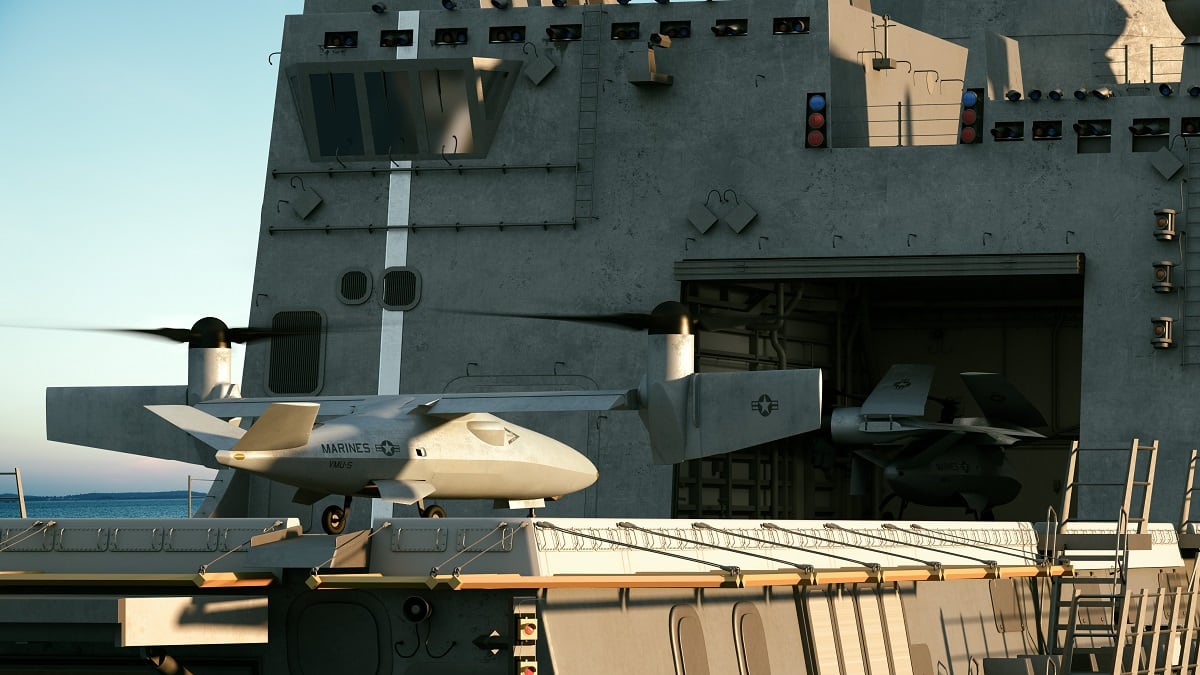The Corps’ future amphibious-ship launched sea drone known as the MUX is still inching forward despite not making a big splash in the Navy’s fiscal year 2020 budget request.
The lack of a highlight in the Navy’s request led some to believe the Corps had ditched the program for a trio of MQ-9 Reaper drones that the Marines requested in 2020 for $117 million.
But the MUX isn’t dead ― it got funding, just not a lot. The Marine Corps only requested $21.6 million for it in its fiscal year 2020 budget submission, according to Capt. Christopher Harrison, a Marine spokesman.
“This funding will provide technical concept maturation and experimentation for MUX, ensuring the programs remains on track to provide the Marine Corps an operational capability in FY26,” Harrison explained. “These efforts will include the development of system architectures and rapid prototyping of critical system components to inform a future MUX program of record."
RELATED

The $21.6 million request is more than the roughly $11 million Congress approved in the 2019 annual defense legislation.
The Corps had originally requested $25 million dollars for the 2019 defense bill, but lawmakers skeptical of the Corps’ ability to operate a larger group five drone led to cuts.
A May 2018 report from lawmakers on the House Armed Services Committee remarked that it “believes the Marine Corps underestimates the required communications, data link, launch, mission execution and recovery infrastructure, or the human capital resources required to train, operate, maintain and sustain such a system.”
“The Marine Corps also underestimates the necessary human capital resources required to meet current deployment-to-dwell policy and guidance issued by the Secretary of Defense," the report added.
The Corps has never operated or sustained a large group five drone. It currently fields a suite of smaller tactical drones like the RQ-21 Blackjack and Instant Eye quadcopters that have been dished out to the rifle squads.
A 2018 briefing to congress detailed the Corps’ desire to drastically step up its drone game by fielding a wide range of drone sizes and capabilities spread across the Corps’ battalions all the way to the squad level.
But the lack of institutional knowledge of operating a group five drones does create some knowledge and skill gaps for the Corps.
That’s where the Corps new MQ-9 Reaper request comes into play. The Corps is requesting three of the hunter-killer drones in 2020 and another three the following year, for a total of six Reapers.
These drones will help the Corps build the knowledge base on operating a large drone.
The Reaper purchase was also the result of a need for an intelligence, surveillance and strike capability for Marines deployed down range, according to Harrison.

The small adviser group of Marines in Helmand province, Afghanistan, is currently supported with a Reaper contracted through General Atomics Aeronautical Systems Inc., but the aircraft is unarmed and is only providing intelligence and surveillance.
The Reapers fill a current need for the Corps while also providing valuable training, but it is by no means a replacement for the Corps’ MUX drone.
For one, the Reaper can’t fly off the deck of a ship or amphib, a key requirement the Corps’ MUX.
The Corps also wants its future MUX drone to do a little of everything, far surpassing the capabilities of the Reaper, whose glory days were largely relegated to striking terrorists and militants in low tech conflicts.
Marine leaders laid out their MUX wish list in June 2018 for industry leaders.
At the time, the Corps was seeking a drone that could conduct communications relay, intelligence collection, kinetic and electronic strike, network capabilities, and an early airborne warning ability that would afford the Marine Expeditionary Units to operate independent of aircraft carrier strike groups.
“In addition to its strike capability, MUX will also provide airborne escort for existing platforms, as well as cargo resupply for distributed operations,” Harrison said in an emailed statement.
Shawn Snow is the senior reporter for Marine Corps Times and a Marine Corps veteran.





